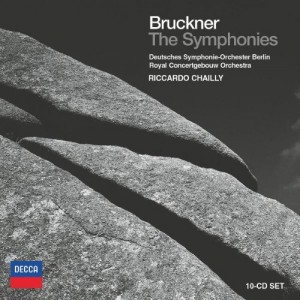He was perhaps the world’s first shoegazer. Like his fellow noisemakers, he wrote his best material in the late eighties and early nineties. Only it wasn’t the 1990s; it was the 1890s. And he was a classical composer: his name was Anton Bruckner.
Bruckner grew up in the Austrian countryside, where he later worked as a teacher and a church organist, and only came into his own as a composer when he was almost 40. Being shy and unassuming, he probably literally gazed at his shoes at the smart society events in which he found himself in his adopted city of Vienna. Life was awkward, as he wrote symphonies that took a while to be accepted by his contemporaries as other than just strangely incompetent, because, while in many ways traditional, they nonetheless rejected both the tense, dynamic continuity of the old master Beethoven, and the broad, fluid continuity of the new prodigy Wagner. Bruckner offered something else, which was, well, shoegazey in the extreme: forlorn lyricism discomfited by complex polyphony, rich and roving harmonies, a tonality stretched to breaking point, hypnotic rhythms, vast spaces and surges of dark and disruptive noise. In the process he developed a wholly personal symphonic idiom that helped to define contemporary musical radicalism, and possibly paved the way for such avant-garde 20th-century practices as collagistic approaches to tonality and metre, minimalist repetition and phasing, and texture and drone music.
Bruckner’s orchestration was modelled after the sound of his primary instrument, the pipe organ. One distinctive feature of the organ is the ability to range from the slightest sound to the most powerful sonic discharge, which can be sustained in time indefinitely by the organist. Another distinctive feature is its intrinsic “polyphonic” approach. Most organs have multiple ranks of pipes of differing timbre, pitch and loudness that the player can employ singly or in combination through the use of controls called stops. Bruckner’s compositions often seem to alternate between two groups of instruments as if he was changing from one manual of an organ to another. At other times he seems to compose as if playing several sets of pipes simultaneously, the sounds mixed and intermingled in the environment rather than the instrument itself. At all times his compositions employ the full range of the quiet-loud dynamics and suggest great loneliness and insecurity in the midst of majestic orchestral breadth, bringing to mind the small organ player working the stops under the vast, infinitely vertical pipes.
Bruckner’s symphonies consist of slow progressions based on long, spacious paragraphs and enormous blocks of sound, interspersed with sudden pauses and changes of direction. To use current post-rock/shoegaze terms, their character and colour range from the beatific lushness of Sigur Rós through the sprawling spikiness of “Daydream Nation”-era Sonic Youth and Godspeed You! Black Emperor to the pent-up craggy starkness of Codeine or Shellac. Throughout, something chaotic and unstable lurks beneath Bruckner’s Romanticism, and in his last two symphonies, the 8th and the unfinished 9th, the black disorder seems to positively seep to the surface.
The materiality of sound is increasingly at the centre of these symphonies, even in the most transcendent passages. It is alternately overdriven and grainy, layered and viscid, undulating and cascading, surging like a magnesium flare, spreading like a stain.
In the scope of a single piece, harmonies and sounds overspill to create strange, wounded and beautiful textures; a putative solo clarinet is combined with strings to make a new broken sound; melodies open diagonally to nowhere; a sustained note or insistent swarm stay constant while around them the harmony changes and revolves, creating the sense of a slow sidereal swoon; brass or strings pick up the pace and carve out angular, jagged math-rock blocks, the discordant and abrasive, almost percussive sound of the brass evoking the distortion caused by a torn speaker; the sound drifts into stagnant pools that drowse in hazy atmospherics; a lighter, tuneful segment sees the brass sounding almost cello-like, as if played through the warm valves of a vintage amp; phrases converge into abstract masses of sheer sound; pauses let the rhythm resonate and the sound linger and unravel and dissolve.
Bruckner didn’t managed to complete the Finale of his 9th and last symphony, which he dedicated “To God the Beloved,” before he died in 1896. No matter: already at the end of the 2nd movement of his 7th Symphony, the fading sound gets stuck on an ebb and flow repetitive figure that recalls the fuzzy needle that, at the end of Sonic Youth’s vinyl version of “Evol”, retraces the symbol ∞ all the way to infinity.

